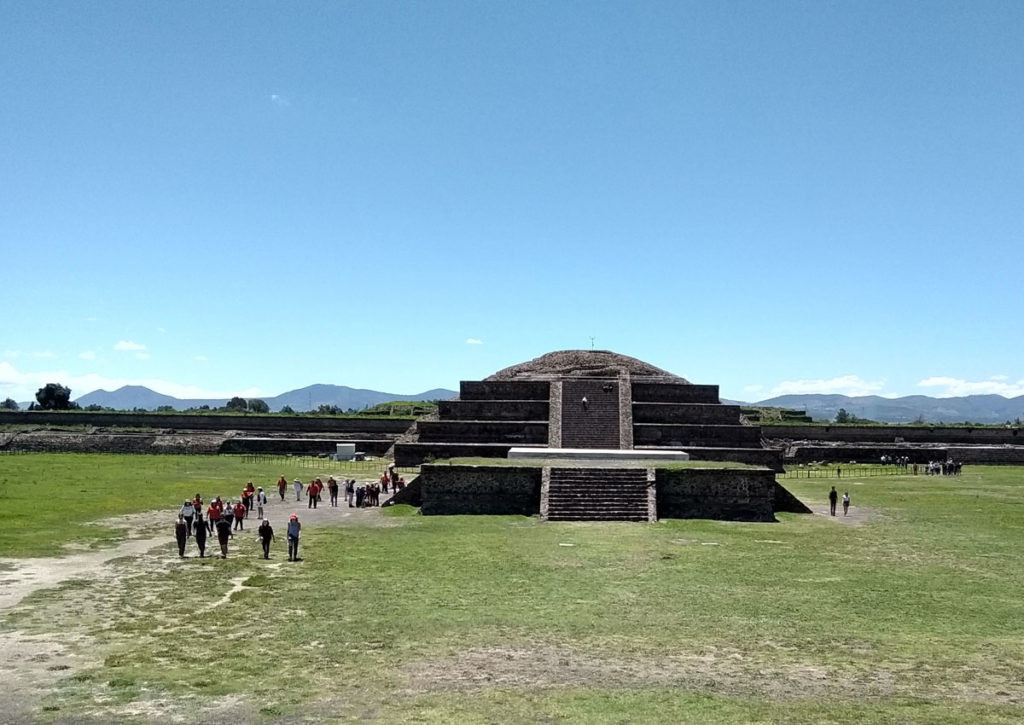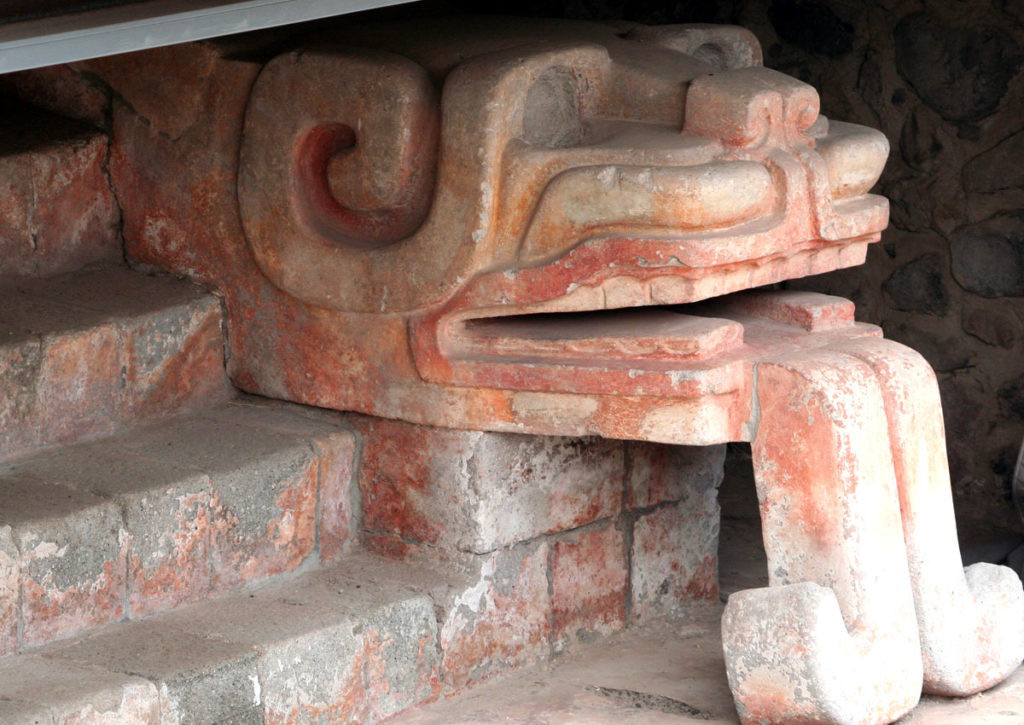Is Mexico The Center Of The Universe? For the LGBTQ+ community seeking vibrant culture, historical richness, and welcoming destinations, gaymexico.net offers a unique perspective on why Mexico feels like the center of their world. Dive into ancient mysteries, modern celebrations, and find your place in this diverse and accepting country with our guides, event listings, and community connections. Discover LGBTQ+ travel, Mexican culture, and safe spaces with us.
1. What Makes Mexico Feel Like the Center of the Universe?
Mexico’s rich history, diverse culture, and warm, welcoming atmosphere for the LGBTQ+ community make it feel like the center of the universe for many. From ancient Mesoamerican civilizations to modern LGBTQ+ havens, Mexico offers a unique blend of experiences that resonate deeply with individuals seeking connection, celebration, and self-discovery.
Mexico’s allure goes beyond its picturesque landscapes and delicious cuisine. It’s the profound sense of belonging and acceptance that many LGBTQ+ travelers find here. The country’s history is interwoven with stories of resilience, cultural fusion, and spiritual significance, creating an atmosphere that is both captivating and transformative. When you factor in its contemporary commitment to diversity and inclusion, Mexico becomes an irresistible destination for those seeking a place where they can truly be themselves.
2. How Did Ancient Civilizations View Mexico as a Center?
Ancient civilizations, such as the Aztecs and Maya, considered Mexico, particularly the Valley of Mexico, as a sacred center of the universe, a place of creation, and a nexus of spiritual power. The magnificent city of Teotihuacán, for example, was revered as the “birthplace of the gods,” reflecting its central role in their cosmology.
These ancient beliefs were deeply rooted in their understanding of the cosmos, the cycles of nature, and the interconnectedness of all things. The Aztecs, who came to power centuries after the decline of Teotihuacán, adopted and expanded upon these ideas, viewing their capital city of Tenochtitlan (modern-day Mexico City) as the navel of the world, the point from which all directions emanated. This perspective shaped their worldview, influencing their art, architecture, and social structures.
 Panoramic view from the summit of the Pyramid of the Moon in Teotihuacan, symbolizing the city's significance as a cultural and spiritual center for ancient civilizations
Panoramic view from the summit of the Pyramid of the Moon in Teotihuacan, symbolizing the city's significance as a cultural and spiritual center for ancient civilizations
3. What is the Significance of Teotihuacán?
Teotihuacán was one of the largest and most influential cities in Mesoamerica, flourishing between the 1st and 8th centuries CE, and is considered a significant spiritual and cultural center, influencing art, architecture, and religion throughout the region. Its monumental pyramids, temples, and urban layout reflect a sophisticated understanding of cosmology and urban planning.
The city’s name, given by the Aztecs centuries after its decline, translates to “birthplace of the gods,” underscoring its mythical importance. Archaeological evidence suggests that Teotihuacán was a multi-ethnic metropolis, drawing people from diverse backgrounds and cultures, including Maya and Zapotec communities. This cultural fusion contributed to the city’s unique artistic style and religious practices, which spread throughout Mesoamerica through trade, diplomacy, and conquest.
4. Which LGBTQ+ Friendly Destinations in Mexico Reflect This “Center of the Universe” Feeling?
Several Mexican destinations offer a welcoming and vibrant atmosphere for the LGBTQ+ community, reflecting the “center of the universe” feeling through their inclusivity, celebration of diversity, and rich cultural experiences. Puerto Vallarta, Mexico City, and Cancun are particularly popular choices.
These cities have cultivated thriving LGBTQ+ scenes, with gay-friendly hotels, bars, clubs, and cultural events that cater to a diverse range of tastes and interests. Puerto Vallarta is renowned for its beautiful beaches, lively nightlife, and welcoming atmosphere. Mexico City boasts a rich cultural heritage, world-class museums, and a vibrant LGBTQ+ community in the Zona Rosa neighborhood. Cancun offers stunning beaches, luxurious resorts, and a growing LGBTQ+ scene. These destinations not only provide safe and welcoming spaces for LGBTQ+ travelers, but also offer opportunities to connect with local communities, explore Mexican culture, and celebrate diversity.
5. What LGBTQ+ Events and Festivals Showcase Mexico as a Hub?
Mexico hosts numerous LGBTQ+ events and festivals that highlight its status as a hub for the community, showcasing its progressive values, vibrant culture, and commitment to inclusivity. These events include pride parades, film festivals, and cultural celebrations that attract visitors from around the world.
Some of the most notable LGBTQ+ events in Mexico include:
- Mexico City Pride (Marcha del Orgullo LGBT de la Ciudad de México): One of the largest and most vibrant pride parades in Latin America, attracting hundreds of thousands of participants each year.
- Puerto Vallarta Pride: A week-long celebration of LGBTQ+ culture, featuring parades, parties, and cultural events in this popular resort town.
- Mix Mexico LGBT Film Festival: A leading film festival showcasing LGBTQ+ cinema from Mexico and around the world.
- Cancun Pride: An annual event celebrating diversity and inclusion in this popular tourist destination.
These events provide opportunities for LGBTQ+ individuals to connect, celebrate, and express themselves freely in a supportive and welcoming environment. They also contribute to raising awareness about LGBTQ+ issues and promoting equality and acceptance in Mexican society.
6. How Does gaymexico.net Enhance the Experience of LGBTQ+ Travelers in Mexico?
Gaymexico.net provides a comprehensive resource for LGBTQ+ travelers planning a trip to Mexico, offering valuable information, resources, and community connections to enhance their experience. The website features detailed guides to LGBTQ+-friendly destinations, listings of gay bars, clubs, hotels, and events, as well as news and information on LGBTQ+ issues in Mexico.
Gaymexico.net serves as a trusted source of information and inspiration for LGBTQ+ travelers seeking to explore Mexico safely and authentically. The website’s user-friendly interface, comprehensive content, and community focus make it an invaluable tool for planning a memorable and fulfilling trip. Whether you’re looking for the hottest nightlife spots, the most welcoming accommodations, or the latest news on LGBTQ+ rights in Mexico, gaymexico.net has you covered.
7. What Legal Protections and Social Attitudes Support LGBTQ+ Travelers in Mexico?
Mexico has made significant strides in LGBTQ+ rights in recent years, with legal protections and evolving social attitudes that support LGBTQ+ travelers. Same-sex marriage is legal throughout the country, and anti-discrimination laws protect LGBTQ+ individuals in various areas, including employment, housing, and healthcare.
According to Human Rights Watch, Mexico City legalized same-sex marriage in 2009, setting a precedent for other states to follow. As of 2022, same-sex marriage is legal in all 32 Mexican states. Additionally, Mexico has enacted laws prohibiting discrimination based on sexual orientation and gender identity, ensuring greater protection for LGBTQ+ individuals. Social attitudes towards LGBTQ+ people have also become more accepting, particularly in urban areas and tourist destinations. While challenges remain, Mexico is increasingly recognized as a welcoming and progressive destination for LGBTQ+ travelers.
8. What Cultural Aspects of Mexico Resonate With the LGBTQ+ Community?
Several aspects of Mexican culture resonate deeply with the LGBTQ+ community, including its emphasis on community, celebration, and self-expression. Mexico’s vibrant artistic traditions, rich history, and strong sense of identity provide a fertile ground for LGBTQ+ individuals to connect with their heritage and express their authentic selves.
The Mexican concept of familia (family) extends beyond blood relations to encompass chosen families and supportive communities, which is particularly meaningful for LGBTQ+ individuals who may have faced rejection or discrimination elsewhere. Mexican celebrations, such as Día de Muertos (Day of the Dead) and Carnival, are known for their colorful displays, exuberant music, and inclusive spirit, providing opportunities for LGBTQ+ individuals to participate and express their identities freely. Moreover, Mexico’s artistic traditions, from Frida Kahlo’s iconic self-portraits to the bold murals of Diego Rivera, celebrate individuality and challenge societal norms, inspiring LGBTQ+ artists and activists to push boundaries and create meaningful work.
 Figure with a jaguar's head and a snake's tongue at the base of a partially buried stairway in Teotihuacan, showcasing the artistic and symbolic richness of ancient Mexican culture
Figure with a jaguar's head and a snake's tongue at the base of a partially buried stairway in Teotihuacan, showcasing the artistic and symbolic richness of ancient Mexican culture
9. How Can LGBTQ+ Travelers Stay Safe and Informed in Mexico?
LGBTQ+ travelers can stay safe and informed in Mexico by taking certain precautions and utilizing available resources. Researching destinations, staying aware of local laws and customs, and connecting with LGBTQ+ organizations and communities can help ensure a safe and enjoyable trip.
Here are some tips for LGBTQ+ travelers in Mexico:
- Research your destination: Learn about the local laws, customs, and attitudes towards LGBTQ+ people in the specific areas you plan to visit.
- Stay aware of your surroundings: Be mindful of your surroundings and avoid walking alone in unfamiliar areas, especially at night.
- Connect with LGBTQ+ organizations: Reach out to local LGBTQ+ organizations and community centers for information, resources, and support.
- Use trusted accommodations and services: Choose LGBTQ+-friendly hotels, tour operators, and other service providers that have a proven track record of providing safe and welcoming experiences.
- Be discreet when necessary: While Mexico is generally welcoming, it’s important to be aware that attitudes may vary depending on the region and community. In more conservative areas, it may be wise to be discreet about your sexual orientation or gender identity.
- Stay informed about LGBTQ+ rights: Keep up-to-date on the latest news and developments regarding LGBTQ+ rights in Mexico.
By taking these precautions and utilizing available resources, LGBTQ+ travelers can minimize risks and enjoy a safe and fulfilling experience in Mexico.
10. What Resources Does gaymexico.net Offer for Planning a Trip?
Gaymexico.net offers a wide range of resources to help LGBTQ+ travelers plan a memorable and stress-free trip to Mexico, including destination guides, event listings, hotel recommendations, and community forums. The website’s comprehensive content and user-friendly interface make it an invaluable tool for planning your dream vacation.
Here are some of the resources you can find on gaymexico.net:
- Destination Guides: Detailed guides to LGBTQ+-friendly cities and regions throughout Mexico, including information on attractions, nightlife, accommodations, and cultural events.
- Event Listings: Up-to-date listings of LGBTQ+ events and festivals in Mexico, including pride parades, film festivals, and cultural celebrations.
- Hotel Recommendations: Reviews and recommendations for gay-friendly hotels, resorts, and guesthouses that cater to LGBTQ+ travelers.
- Community Forums: A platform for LGBTQ+ travelers to connect with each other, share tips and advice, and ask questions about traveling in Mexico.
- Travel Tips and Advice: Practical tips and advice on staying safe, respecting local customs, and navigating the LGBTQ+ scene in Mexico.
- News and Information: Updates on LGBTQ+ rights, legal developments, and social issues in Mexico.
With its comprehensive resources and community focus, gaymexico.net is your one-stop shop for planning an unforgettable LGBTQ+ vacation in Mexico.
11. How Does Teotihuacan’s Architecture Reflect Its Cosmological Beliefs?
Teotihuacan’s architecture intricately reflects its cosmological beliefs, using the alignment of structures with celestial events and cardinal directions to symbolize the city’s connection to the universe. The Pyramid of the Sun and the Pyramid of the Moon, along with the Avenue of the Dead, form a sacred axis that mirrors the movement of the sun and moon.
According to research from the National Institute of Anthropology and History (INAH), the city’s layout was carefully planned to align with specific astronomical events, such as solstices and equinoxes, reinforcing the idea that Teotihuacan was a microcosm of the universe. The talud-tablero architectural style, characterized by sloping panels (talud) topped with rectangular panels (tablero), is believed to represent the layers of the cosmos, with each level symbolizing a different realm of existence. These architectural features not only served a practical purpose, but also conveyed deep symbolic meaning, reinforcing the city’s role as a spiritual center.
12. What is the Significance of the Avenue of the Dead?
The Avenue of the Dead (Miccoatli in Nahuatl) was the central thoroughfare of Teotihuacan, functioning as both a ceremonial pathway and a symbolic representation of the journey between the earthly and the divine realms. Lined with monumental structures, temples, and palaces, the avenue served as a stage for religious processions, rituals, and state events.
Archaeological evidence suggests that the Avenue of the Dead was carefully planned to align with the setting sun on specific dates, further emphasizing its cosmological significance. The avenue’s name, given by the Aztecs centuries after Teotihuacan’s decline, reflects their belief that the structures lining the pathway were tombs, although this has since been disproven. Nevertheless, the name evokes the avenue’s symbolic association with death, rebirth, and the cyclical nature of existence. Walking along the Avenue of the Dead today, visitors can sense the power and grandeur of this ancient city and its profound connection to the cosmos.
13. What Role Did Trade and Cultural Exchange Play in Teotihuacan’s Influence?
Trade and cultural exchange played a crucial role in expanding Teotihuacan’s influence throughout Mesoamerica, allowing the city to disseminate its artistic styles, religious beliefs, and architectural techniques to distant regions. Teotihuacan’s merchants established extensive trade networks that stretched from present-day Mexico to Central America, exchanging goods such as obsidian, pottery, and textiles for valuable resources and raw materials.
According to a study by the Mesoamerican Research Center, Teotihuacan’s influence can be seen in the presence of its distinctive talud-tablero architecture in cities as far away as Tikal in Guatemala and Copán in Honduras. The city’s religious beliefs, particularly the worship of deities such as the Feathered Serpent (Quetzalcoatl), also spread throughout Mesoamerica, influencing the religious practices of other cultures. This cultural exchange not only enriched Teotihuacan’s own society, but also contributed to the development of a shared Mesoamerican cultural identity.
14. How Did the Decline of Teotihuacan Affect the Region?
The decline of Teotihuacan in the 7th and 8th centuries CE had a profound impact on Mesoamerica, leading to political fragmentation, social upheaval, and the rise of new regional powers. The reasons for Teotihuacan’s decline are still debated by scholars, but factors such as environmental degradation, overpopulation, and internal conflict may have contributed to its downfall.
According to historical records, the collapse of Teotihuacan led to a power vacuum in the Valley of Mexico, as rival city-states vied for control of the region. The city’s extensive trade networks were disrupted, and its cultural influence waned as other centers, such as Xochicalco and Cholula, rose to prominence. The decline of Teotihuacan also marked a shift in Mesoamerican warfare, with increased militarism and the rise of warrior elites. Despite its decline, Teotihuacan’s legacy continued to influence Mesoamerican culture for centuries to come, shaping the development of later civilizations such as the Toltecs and the Aztecs.
15. How Can I Experience the “Center of the Universe” Feeling in Mexico?
To truly experience the “center of the universe” feeling in Mexico, immerse yourself in its rich history, vibrant culture, and welcoming LGBTQ+ community. Explore ancient sites like Teotihuacan and Chichen Itza, visit LGBTQ+-friendly destinations like Puerto Vallarta and Mexico City, and participate in cultural events and celebrations.
Here are some specific recommendations:
- Visit Teotihuacan: Explore the monumental pyramids, temples, and plazas of this ancient city and learn about its cosmological significance.
- Explore Mexico City’s Zona Rosa: Immerse yourself in the vibrant LGBTQ+ scene of this historic neighborhood, with its gay bars, clubs, restaurants, and shops.
- Relax on the beaches of Puerto Vallarta: Enjoy the sun, sand, and surf in this popular LGBTQ+ resort town, known for its welcoming atmosphere and stunning scenery.
- Attend Mexico City Pride: Participate in one of the largest and most colorful pride parades in Latin America, celebrating LGBTQ+ rights and culture.
- Visit the Museo Nacional de Antropología: Explore the rich history and cultural heritage of Mexico at this world-class museum in Mexico City.
- Connect with the local LGBTQ+ community: Reach out to LGBTQ+ organizations and community centers to learn about local events, resources, and support services.
By embracing Mexico’s history, culture, and community, you can discover why so many people feel that this vibrant country is truly the center of their universe.
For more information and resources, visit gaymexico.net, your comprehensive guide to LGBTQ+ travel in Mexico. Find LGBTQ+ travel guides, events, and connect with the community. Address: 3255 Wilshire Blvd, Los Angeles, CA 90010, United States. Phone: +1 (213) 380-2177. Website: gaymexico.net. Let gaymexico.net be your compass to navigate and explore Mexico, where the spirit of acceptance meets the heart of culture.
